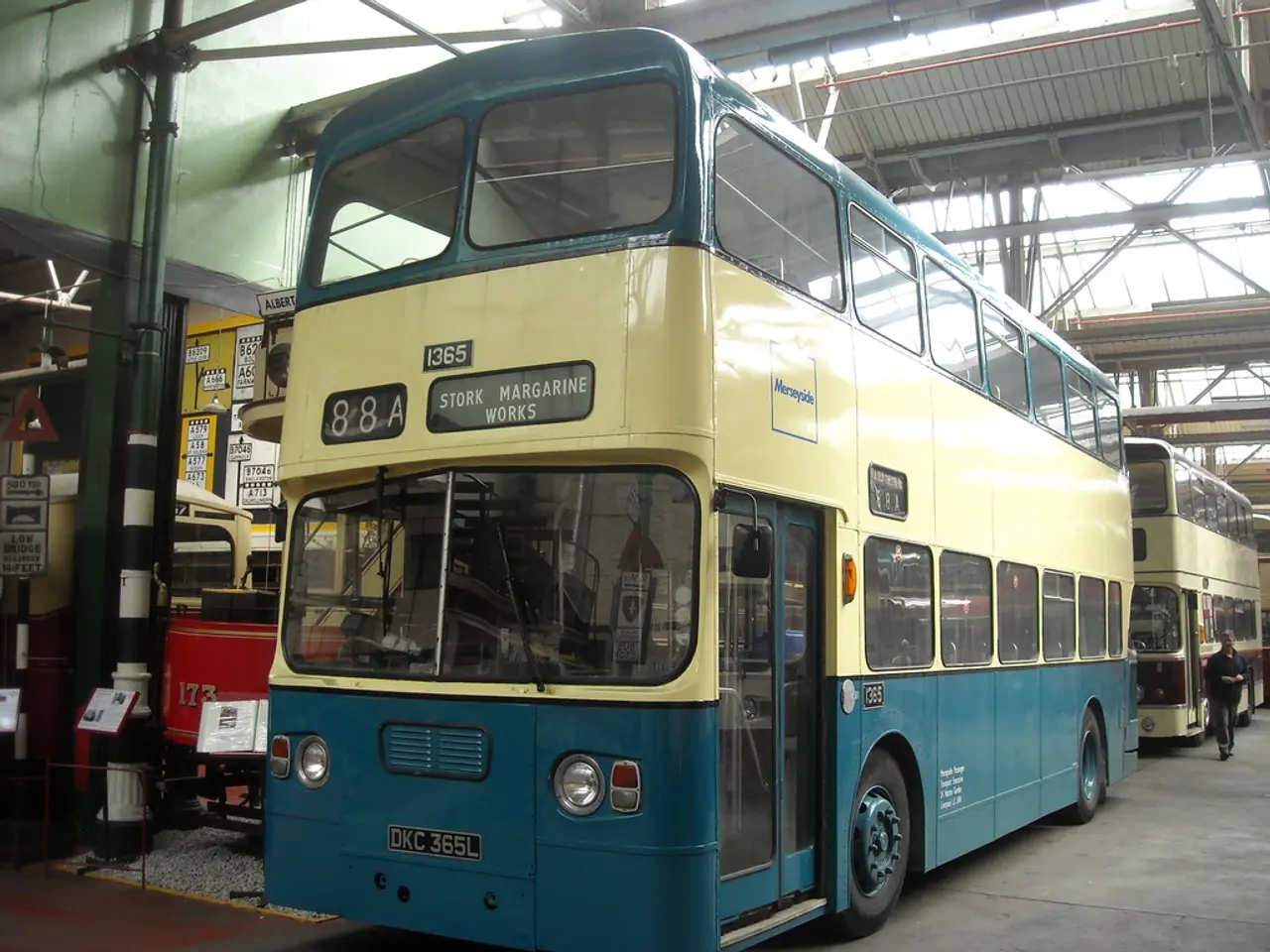Financial Analysis of Capital and Operating Expenses: Increasing Diesel Taxes Promote Shift to Electric Buses in Colombia
In the vibrant streets of Colombia, a shift is underway in public transportation. Electric buses, once considered a luxury, are becoming increasingly competitive with their conventional internal combustion engine (ICE) counterparts.
According to Diego González, an e-mobility consultant, the falling prices of batteries and government-led tax incentives are making electric buses more attractive. While the cost of 9-metre electric buses in Colombia ranges from USD 180,000 to USD 230,000, ICE buses typically cost around USD 120,000 for a chassis and body. However, once taxes and tariffs are included, the total cost of ICE buses can exceed USD 180,000.
Electric buses enjoy several advantages over ICE buses. For instance, they are exempt from vehicle circulation taxes and import duties, providing a 35% cost advantage over ICE buses. The Colombian government also helps balance the scales through tax incentives for electric buses, with electric buses subject to a 5% Value-Added Tax (VAT) compared to a 19% VAT for ICE vehicles.
The benefits extend beyond financial incentives. Electric buses boast a regenerative braking system that improves energy efficiency and reduces wear on brakes and tyres, potentially extending brake life to up to 130,000 kilometres. They also have fewer moving parts and do not require the same type of maintenance, leading to up to 55% lower preventive and corrective maintenance costs compared to ICE buses.
However, the adoption of electric buses in Colombia is not without challenges. The lack of adequate charging infrastructure remains a main barrier to mass adoption. Poor enforcement regarding infrastructure implementation and the expansion of charging points limits the effectiveness of electric vehicle incentives.
Despite these challenges, the cost gap between electric buses and ICE buses has narrowed significantly. Today, batteries represent between 23% and 27% of the total cost of electric buses, a substantial reduction in the price gap between the two technologies. This 54% difference in upfront costs encourages the adoption of electric buses in Colombia.
State-owned utility companies have made sufficient progress in electrifying depots for public transport systems in low-income areas, offering a promising future for electric buses in Colombia. As the infrastructure improves and costs continue to decrease, it is likely that electric buses will become the norm in Colombia's bustling cities.
Read also:
- Musk threatens Apple with litigation amidst increasing conflict surrounding Altman's OpenAI endeavor
- Transitioning to Electric Vehicles Places Heavy Demand on Power Grids
- E-mobility continues its progress after a decade since the scandal, staying on course
- The Commission deems the assistance program to be in agreement with the domestic market regulations.








